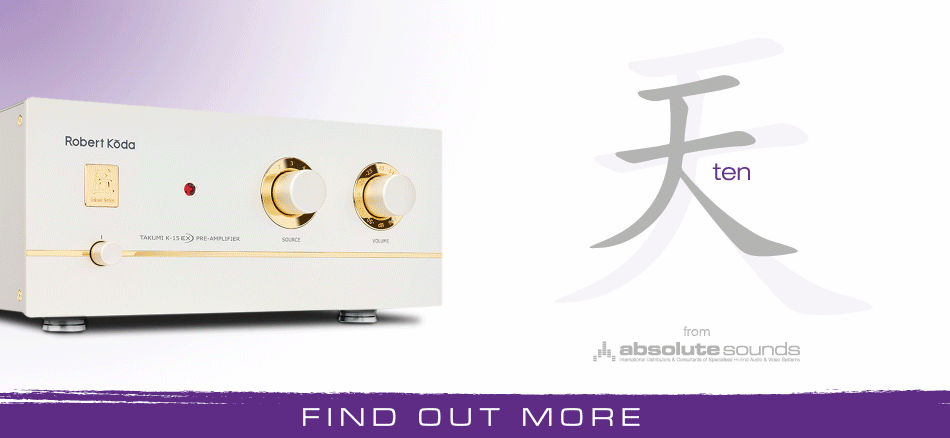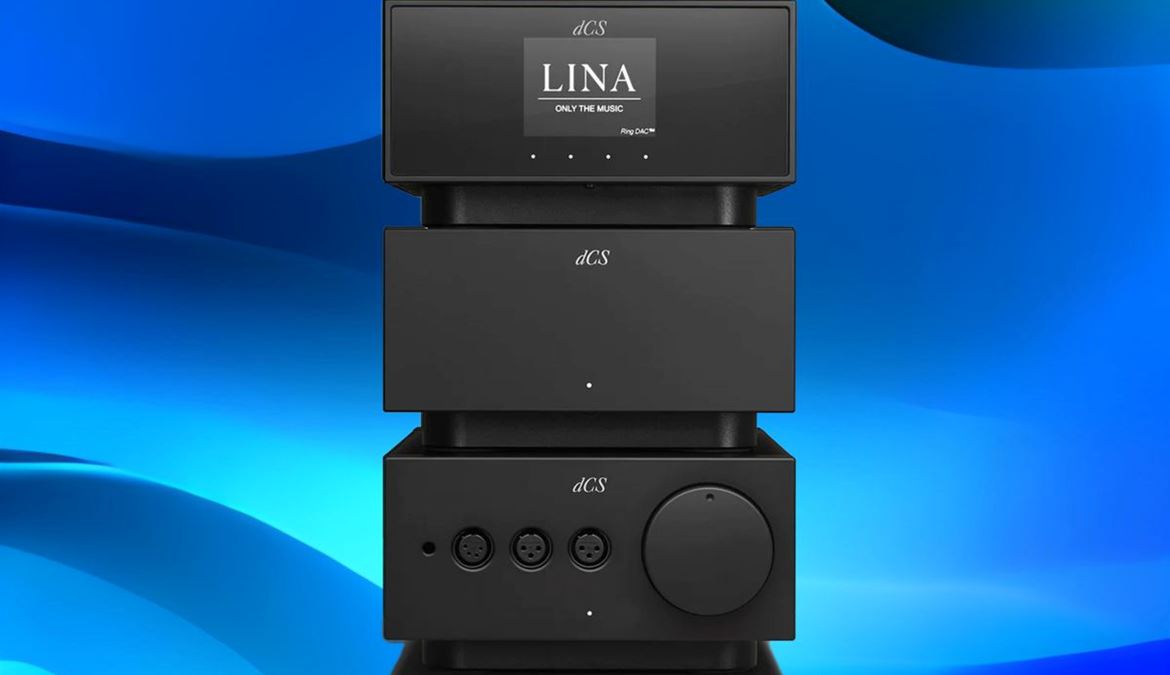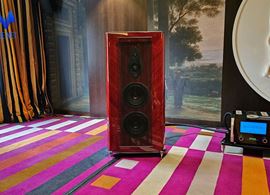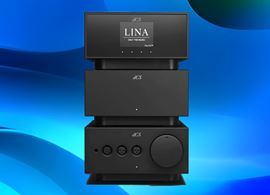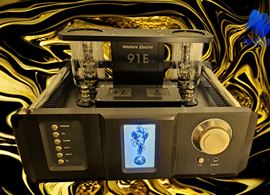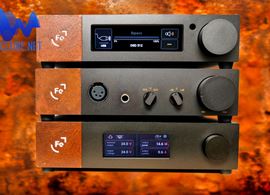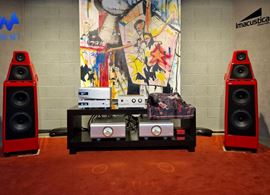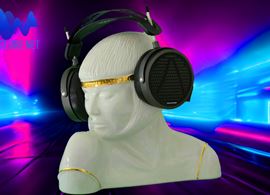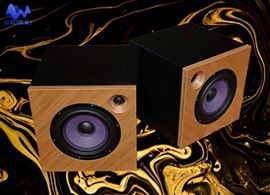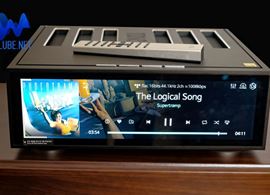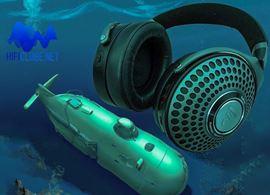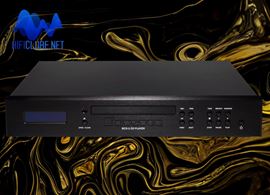Ler artigo integral em Português
Note: Due to customs delay, I was unable to listen to the Lina system for as long as I wanted before publishing. Therefore, this is a preliminary evaluation, not an in-depth review. However, given the obvious excellence of the product, I stand by my conclusions.
Three pieces of diverse function in perfect harmony blended by the mystery of art and technology.
What could lead an audiophile to invest more than €30,000 in a dedicated dCS Lina System for headphone listening, consisting of a Network DAC (€14,750), Master Clock (€8, 750) and Headphone Amplifier (€10,750)?
The design?
The system is housed in three separate matte black 'shoeboxes', that are undoubtedly sturdy, but uninspiring. We are not dealing with a Vivaldi or Rossini-style here with the front panel jutting out in stylized waves. Instead, we're dealing with plain rectangular black boxes measuring 121.5 mm (H) x 220mm (W) x 356mm (D).
The ergonomics?
The same way dCS collaborated with the Vienna-based StreamUnlimited company by using their S800 streaming platform, it could have also worked with HiFi Rose or Zidoo to offer a large touchscreen. The Lina Network DAC's display is small by today’s standards, albeit larger than the Bartok’s, it has limited features and is a little confusing to use at first, although it can be advantageously replaced by the Mosaic app.
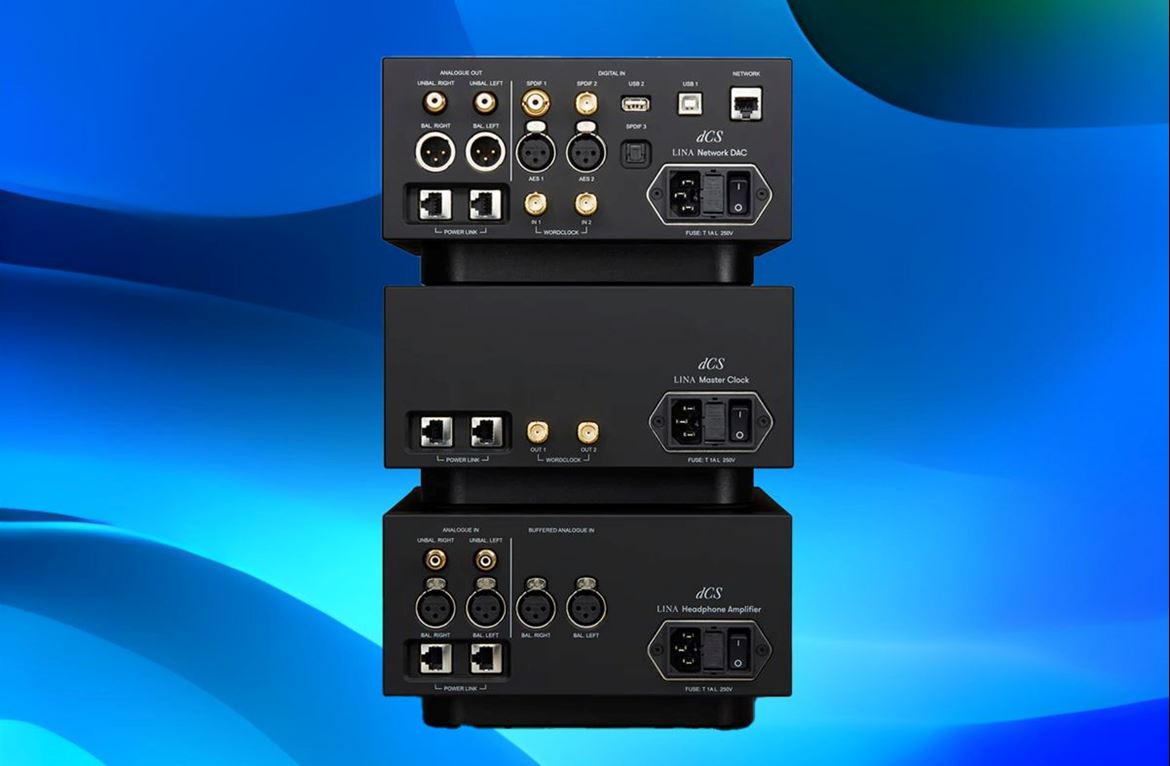
The connections?
The Lina Network DAC has no HDMI or I2S outputs, and the amplifier also lacks a balanced Pentacon 4.4mm output and it has no analogue outputs.
The specifications?
These days, any quality Sabre chipset-based DAC offers PCM786kHz and DSD512 compatibility. The dCS Lina goes no further than PCM384 and DSD128. While it's true that most people don't need it, and dCS will eventually provide updates over the internet, at no cost to the buyer.
The digital filters?
The Lina DAC offers only two - not seven - digital filters for PCM and four for DSD, the latter being converted to PCM and back to DSD.
The DAC technology, perhaps?
At this point, the investment begins to make sense because, unlike most single-chipset-based DACs, Lina uses R2R discrete technology in the Ring DAC.
The dCS Ring DAC conversion circuit is unique in that it combines monotonic 'single bit' conversion with 'bitstream', to achieve a 4.6-bit DSD-type conversion whose 24 possible variable values are combined by a complex algorithm with the 48 fixed levels of the Ring DAC circuit, overcoming the limitations of typical DSD single bit and bitstream pulse width modulation. The Lina uses the same digital circuitry as the Bartók, albeit without the latest Apex module and mapping algorithm.
The sound quality, then?
Here, the investment is fully justified. Nothing compares to it. It’s the best headphone system I've ever heard, which makes it my absolute benchmark, albeit at an unattainable price. And using the Master Clock is not even mandatory. I mean, until the day you try it out and listen to the sound with the clock in the system. From then on, there’s no going back.
Nothing compares to it. It’s the best headphone system I've ever heard.
Each separate component can be added to an existing system, but it makes the most sense to use them as a complete package if you can afford it. But first, let's describe them individually:
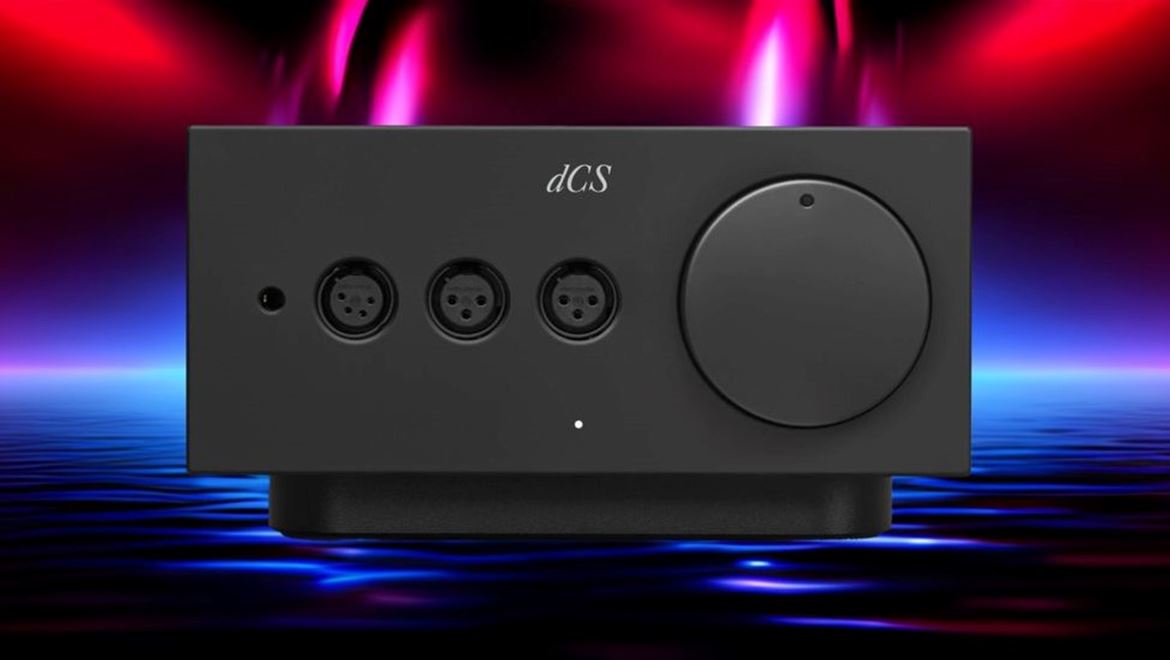
1. dCS Lina Headphone Amplifier
Unlike the Bartók, which can also function as a preamp, the Lina is a pure Class A/B analogue amplifier designed exclusively for headphone listening.
dCS chose Class A/B amplification for several technical reasons: lower distortion, less heat dissipation and power consumption, and more drive. A DC servo system eliminates distortion at the crossover point, challenging Bartók's main Class A advantage.
In all other respects, the Lina is superior to the Bartók. Although optimised for 60-ohm loads, it has almost double the power (2W) on a 30-ohm load (4.5W balanced!), and you hear this immediately when you plug in a pair of hard-to-drive planar magnetic headphones like the Hifiman 1000E. The power seems limitless.
And because the output impedance is extremely low (0.090 ohms) it is virtually immune to the impedance of the headphones, so the frequency response is very linear. I never felt the need to adjust my Hifiman HE1000 headphones with the Roon parametric equaliser.
The Lina amplifier has no digital or analogue controls or adjustments other than the volume control. In fact, it doesn't even have a remote control.
The front panel couldn't be simpler: four headphone outputs, one 4-pin balanced XLR; two 3-pin (balanced) and the standard 6.35mm SE jack all without any labelling. The now fashionable balanced 4.4mm Pentacon isn’t on the menu.
Other than the connectors, there's just the huge rotary volume knob which internally drives an Alps potentiometer. The standby button is hidden under the centre panel and the white pilot LED is very discreet.
Note: If you connect the DAC via RJ45 cables/plugs to the other components, the power-link system activates them all simultaneously (cables are supplied).
The rear panel follows the same line of utilitarian simplicity: it has a pair of RCA and balanced (XLR) inputs to receive the analogue signal from the Lina Network DAC (XLR cables supplied); and a balanced/buffered (XLR) pair for external DACs of various brands; plus, of course, the mains input and on/off button.
There are no analogue outputs; unlike the Bartók, the Lina amplifier isn’t a preamp, so cannot drive an external amplifier or a pair of active speakers - it's purely an analogue headphone amplifier.
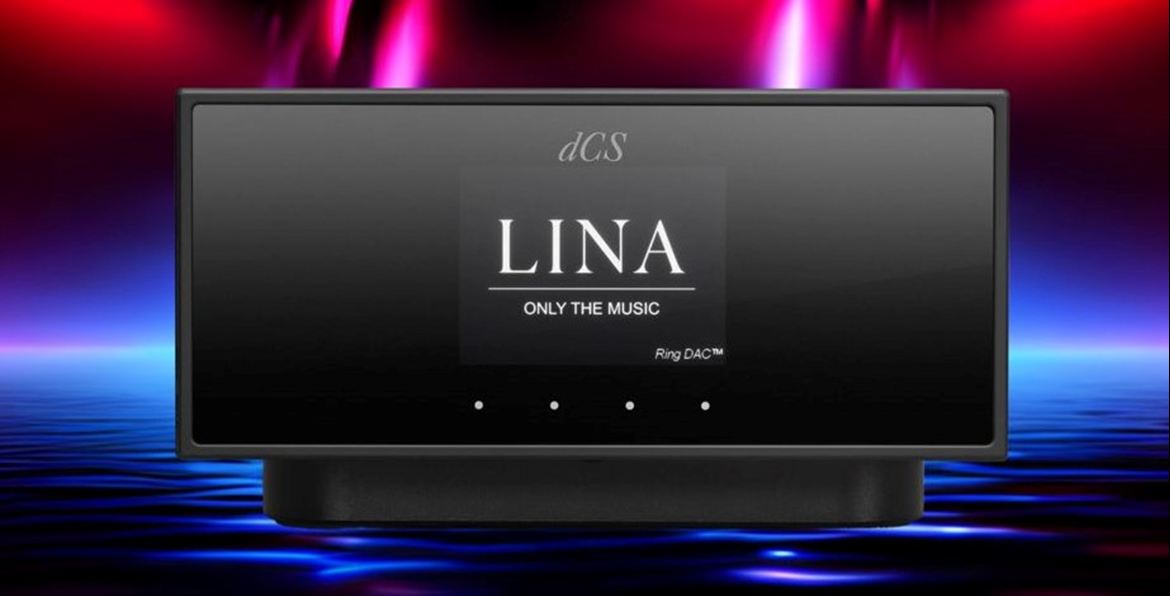
2. dCS Lina Network DAC
The DAC is housed in the same size case as the amplifier (and the Clock), to make them easier to stack, but distinguishes itself by the LCD in the middle of the front acrylic glass panel.
The display is slightly larger than the Bartok's, but given the high price of the product, dCS could have been more generous here too. And it's not even a full touch screen, only the four small, illuminated navigation buttons are touch sensitive. After a few tries you eventually learn to navigate the icons, but you can also use the dCS Mosaic App on your mobile phone or iPad.
The options are extensive and include setting the output level from 0.2V to 6V and enabling/disabling the Master Clock. Once you’ve tried it, you'll always leave it on - I did!
There are also some options to 'format' the sound by using crossfeed and/or ‘expanding’ the sound; selecting digital filters; or choosing DSD or DXD upsampling (I’ve always preferred the latter). It even has a pink noise generator to 'burn in' the system....
With the Lina Network DAC you have direct access to the main online music services: Tidal, Qobuz, Deezer and Spotify Connect, and it’s also compatible with Roon and Apple AirPlay.
The DAC rear panel is busier than the amplifier's: it features RCA and XLR analogue outputs (balanced), and all the classic digital inputs and outputs (but no I2S or HDMI): 3 SPDIF (coaxial, BNC, optical), 2 AES, USB-B, USB-A and dual BNC (for Master Clock) and an RJ45 plug for network connection (Ethernet).
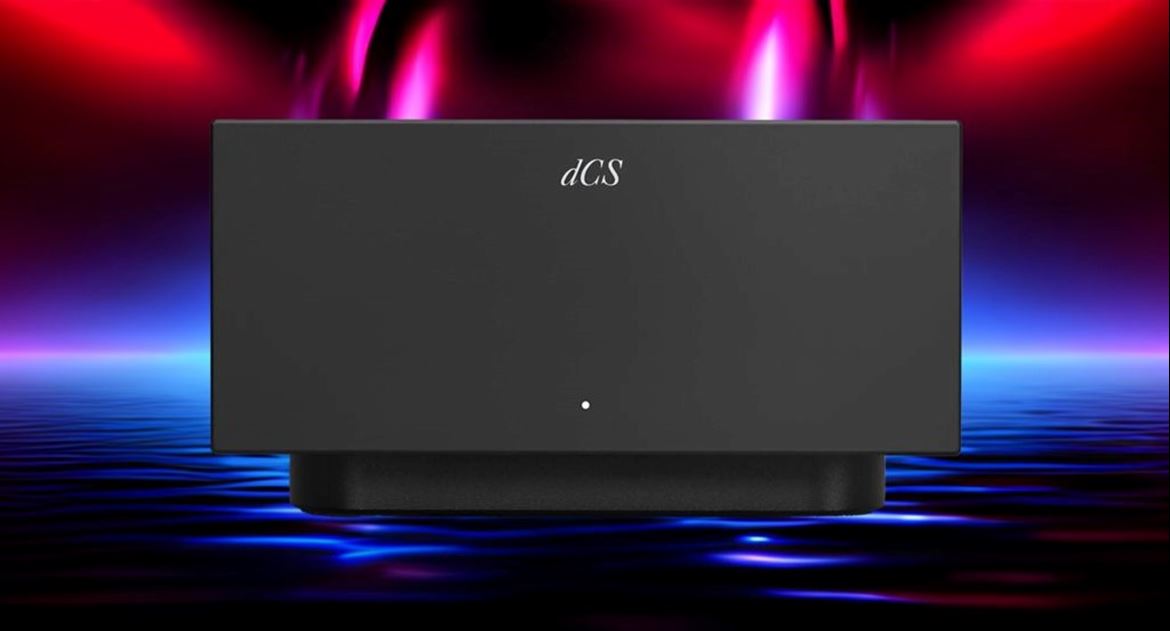
3. dCS Lina Master Clock
As to the Master Clock, you don’t need it, until you do. As dCS says, the 'clock' eliminates jitter, i.e. timing errors and is like a conductor keeping the tempo of the orchestra. And that's exactly what you hear: a better-tuned, but also more powerful and dynamic sound. To ensure absolute precision, the Lina Master Clock uses separate crystal oscillators for the 44.1 and 48kHz sampling frequency groups.
If you are not buying, don’t listen to the system with the Master Clock. The sound will haunt you forever. You’ve been warned.
Music, Maestro!
After 'fiddling' with the filters, DSD/DXD upsampling and crossfeed options, I decided on the following:
- PCM Filter 1 (M1 with MQA), which is more linear, neutral and accurate, whilst Filter 2 is 'sweeter' (-3dB at 20kHz);
- DXD upsampling, sounds more cohesive and organic. If you try DSD use Filter 3 or 4 to keep out-of-band high-frequency distortion at bay.
- Keep Crossfeed off, Lina does not need 'climate changes' that affect the ‘temperature’ and natural ambience of the sound.
In Graceland
The first album I listened to was Paul Simon's 'Graceland'. The album opens with 'The Boy in the Bubble', and of course, for most listeners, it’s the initial 'mapping' of the monumental soundstage with sharp drumbeats that sounds most impressive.
For me, however, it was the rendition of Paul Simon's voice sibilance. It has always sounded artificial to me. Now it sounds so humanly natural, that I finally got the meaning of: '...these are the days of miracle and wonder...'. Lina is a true technological miracle!
'...these are the days of miracle and wonder...'.
And the Ladysmith Black Mambazo never sounded so present and defined as on 'Diamonds On the Soles of Her Shoes'. The astonishing vocal interplay shone in my ears like the diamonds on the soles of her shoes.
Listen and feel
The Lina system not only plays music, it also conveys feelings: of joy and sadness, pain and fear, love and hate.
Listen to Joyce DiDonato singing the aria 'Lascia ch'io pianga' from Handel's Rinaldo. The timbre of her mezzo-soprano voice smacks of caramel custard; her interpretation is technically flawless, emotionally moving and very well supported by the languorous accompaniment of the Pomo D'Oro Ensemble. It even sounds good on YouTube.
But only a dCS Lina System gives you the full emotional charge of the poignant inflexions in her voice as she sings words like 'sospiri' or 'libertá', and it allows us to follow the sweet pianissimi to the edge of her breath. This is the difference between a sublime interpretation and a merely competent performance.
Lascia ch'io pianga la cruda sorte,
E che sospiri la libertà!
E che sospiri, e che sospiri la libertà!
Lascia ch'io pianga la cruda sorte,
E che sospiri la libertà!
Now listen to the magnificent Monserrat Caballé in Tosca, directed by Sir Colin Davis, when she learns that her beloved Mario Cavaradossi has been executed: Mario, morto? Tu? Cosi? Finire cosi? Cosi!", she cries in despair, expressing her shock and disbelief at the news of his death. Lina conveys all the conflicting emotions of love, hate, fear and anger in her voice, not just the words and the dramatic majesty of the music.
But first, listen to Carreras, singing Recondita armonia in his prime: Dissimilar beauties are together blended by the mystery of art. This aria could have been dedicated to Lina who evokes the same mysterious harmony of diverse beauties.
Bring your headphones and a USB stick with your favourite records and listen to the full dCS Lina System at Imacustica. It's best to take your wife with you because Lina isn't just an investment, it's a passion for life.

